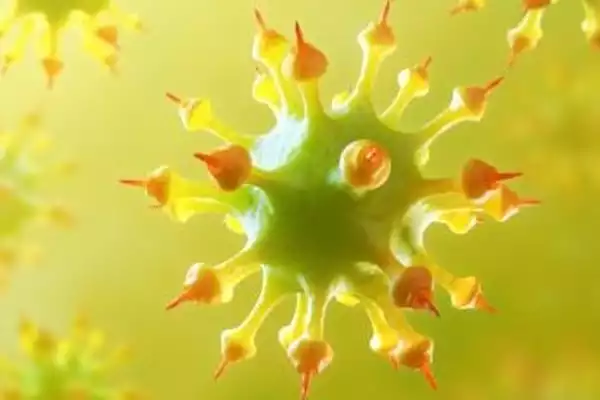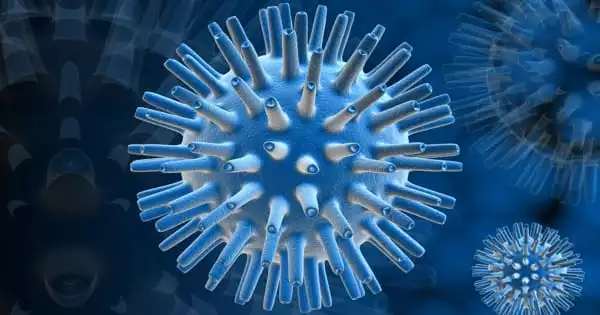HSV1 (herpes simplex virus type 1), which hibernates in the peripheral nervous system and can never be removed, is carried by more than half of all adults in the United States. A new study has revealed herpes’ stealthy approach to infecting the nervous system, paving the way for the development of long-needed vaccines for both HSV1 and its close brother HSV2.
Herpes-type 1 is sealed for life with a kiss. HSV1 (herpes simplex virus type 1), which hibernates in the peripheral nervous system and can never be removed, is carried by more than half of all adults in the United States.
A new Northwestern Medicine study has revealed the virus’s cunning technique for infecting the nerve system, paving the way for the development of long-needed vaccines for both HSV1 and its close brother HSV2. Some carriers will never even get a cold sore as a result of HSV1. For others, though, it can result in blindness or life-threatening encephalitis. There is mounting evidence that it contributes to dementia.
And HSV2, which is more usually spread through sexual contact, can be given from mother to newborn during the delivery process as neonatal herpes, resulting in sores all over the infant’s body. Most babies recover, but in the worst-case scenario, it can cause brain damage or spread to all organs and be fatal.
This is the first time we’ve found a virus repurposing a cellular protein and exploiting it to drive repeated rounds of infection. We are excited to further uncover the molecular mechanisms that these viruses have evolved that make them arguably the most successful pathogens known to science.
Caitlin Pegg
“We need a vaccine to keep herpes from infiltrating the neurological system,” said Greg Smith, a microbiology and immunology professor at Northwestern University Feinberg School of Medicine.
Smith’s lab discovered a path to this in a recent Northwestern Medicine study. The researchers found how the herpes virus steals a protein from epithelial cells and converts it into a defector to let it enter the peripheral nervous system. The process has been dubbed “assimilation.” According to Smith, the discovery could have far-reaching repercussions for numerous viruses, including HIV and SARS-CoV-2.
Riding the rails
“The virus must inject its genetic code into the nucleus in order to begin producing additional herpes viruses,” Smith explained. “It reprograms the cell to turn it into a virus factory. The important question is how it gets to a neuron’s nucleus.”
Herpes, like many viruses, moves over the cell’s train tracks called microtubules by using protein engines called dynein and kinesin. Smith’s team discovered that herpes employs a kinesin engine brought from other cells to ferry itself to the nucleus of the neuron. This kinesin protein acts as a defector to satisfy the virus’s needs.

“By learning how the virus is achieving this incredible feat to get into our nervous system, we can now think about how to take away that ability,” Smith said. “If you can stop it from assimilating kinesin, you would have a virus that couldn’t infect the nervous system. And then you have a candidate for a preventive vaccine.”
Herpes takes a ‘cross-country’ trip
Consider the cell to be a rail yard. All paths lead to a central hub known as the centrosome. Train engines are classified into two types: dynein and kinesin proteins. One leads to the hub (say, downtown), while the other leads away from it to the suburbs.
When a more common virus, such as influenza, infects mucosal epithelial cells (the cells that line your nose and mouth), it latches onto both engines and goes back and forth on the microtubule tracts until it eventually arrives at the nucleus by coincidence. Overall, the travel from the suburbs to the nucleus via the centrosome is short. Traveling down nerves, on the other hand, is the equivalent of a cross-country trip. Herpes jumps on the dynein engine for this trip, but it also makes sure kinesin engines do not take it back the way it came.
“There’s a long way to go,” Smith remarked. “It probably takes eight hours to travel from the end of the neuron to the hub.” However, the dynein engine can only take it to the hub. And herpes has to get to the nucleus. That’s when it reaches into its ‘pocket’ and pulls out a kinesin engine that it abducted from mucosal epithelial cells and enticed to join its team. In a betrayal, that assimilated kinesin transports it directly to the nucleus.
“This is the first time we’ve found a virus repurposing a cellular protein and exploiting it to drive repeated rounds of infection,” said first author Caitlin Pegg, a graduate student in Smith’s lab. “We are excited to further uncover the molecular mechanisms that these viruses have evolved that make them arguably the most successful pathogens known to science,” Smith said.















